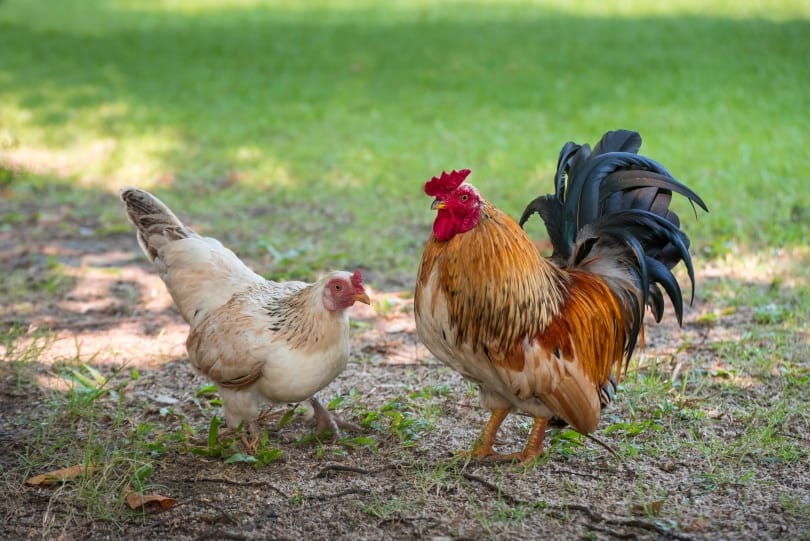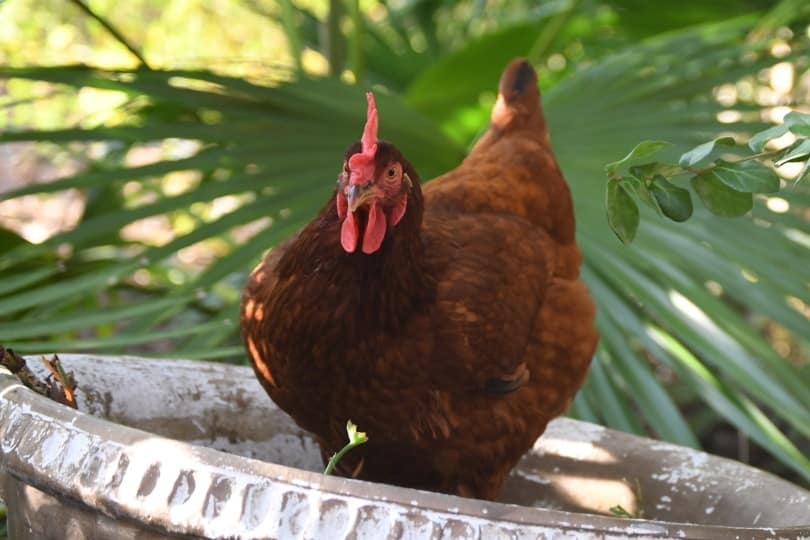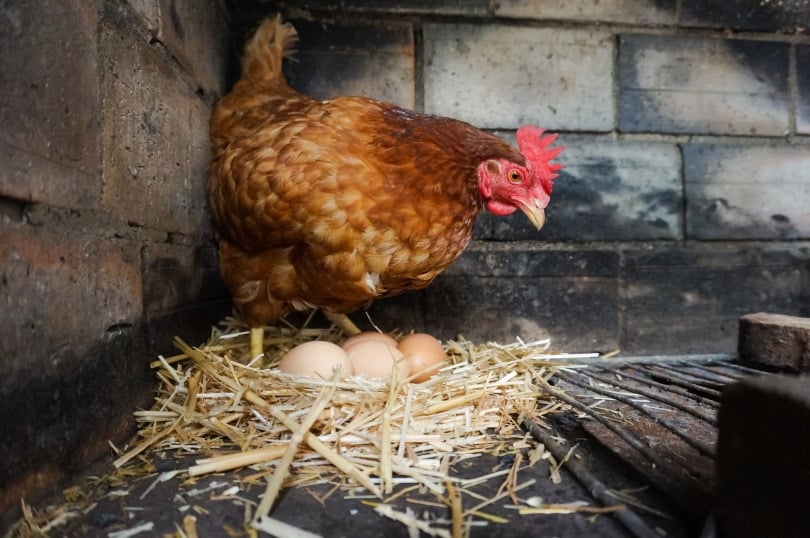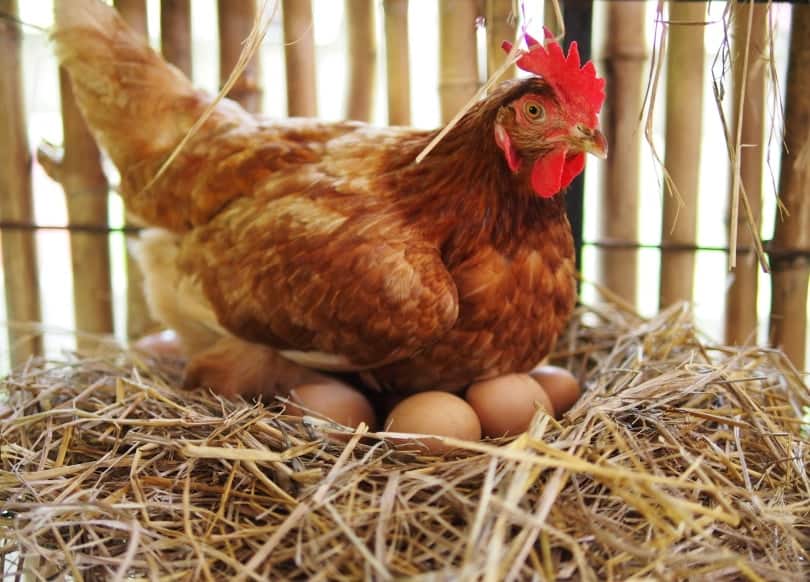Approved by Dr. Luqman Javed
With the growing popularity of backyard chickens, you might have some questions about how chickens lay eggs. How long do eggs develop in chickens? Do you need a rooster around for hens to lay eggs?
These sound like pretty basic questions, but unless you grew up on a farm or studied chicken reproduction, you may not know much about egg-laying.
That’s OK, we’ve got you covered! Whether you’re interested in getting your backyard flock or are simply curious, we’ll cover the basics of how chickens lay eggs.

Do You Need a Rooster for Hens to Lay Eggs?
Female chickens will lay eggs whether a male chicken is around or not. When there is no rooster, hens will lay infertile eggs. When there is a rooster, the eggs might be fertile.
Fertile eggs can be hatched under a broody hen. A hen may go broody even in the absence of eggs and refuse to leave a nest. Hens may go broody even in the absence of a male. The underlying factors that determine if and when a hen will go broody remain unclear.

How Often Do Chickens Lay Eggs?
A hen can lay one egg 1 per day, but there might be some days when no egg is produced. This is because it takes around 26 hours for the hen to form a new egg after the previous egg is laid. A new egg can start forming as soon as 30 minutes after an egg is laid.
Since there are 24 hours in a day, a hen can get a little “behind schedule” for the next egg. A hen may skip a day or two and then get back on the daily schedule again. Hens raised specifically for egg production typically produce around 300–325 eggs per year.
How Do Eggs Develop Inside a Chicken?
As we’ve seen, eggs develop quickly in chickens. What is the development2 process like?
A female chicken has an organ called an ovary. The ovary is made up of clusters called follicles. These follicles are the yolks in fully formed eggs. A follicle will grow in the ovary and then travel down a tubelike structure called an oviduct.
The oviduct is where fertilization happens (if a female had mated with a rooster). It is also the site where the albumin, or egg white, begins to develop. The egg travels further down to the magnum, which is where majority of the albumin is added to it.
The egg then moves onto the isthmus, where the inner and outer shells of the egg form. Finally, within the uterus (also known as the shell gland), the shell completes formation. The shell takes around 15 hours to complete formation. Pigmentation to the shell is added towards the last 5 hours of this process.
The formed egg leaves the chicken’s body through the vagina and cloaca when it is laid. When hens lay an egg, their uterus inverts and ensures that fecal matter, urine, and urates from their urinary and digestive system do not contaminate the egg.

How Soon Does a Chicken Lay Eggs?
How long does it take for a female chick to mature to the point when she can start laying eggs?
A chicken can generally start laying eggs from 18–22 weeks of age. The age varies depending on factors like the breed of chicken and the number of daylight hours. Hens need 14 hours of sunlight to begin laying eggs
When Does a Chicken Stop Laying Eggs?
A hen’s egg-laying productivity changes over its lifetime. Their egg-producing is usually highest during their first year of laying.
The number of eggs will decrease in the second year of laying and then decrease more with each subsequent year.
A hen of a breed not intended to lay eggs lays, on average, around 600 eggs in her lifetime. Breeds raised specifically for laying eggs can produce more eggs; however, they are often retired before they stop laying eggs. A chicken’s life expectancy is between 8–10 years of age, so they will live a few years after they stop laying.

Why Are Eggs Different Colors?
Why do different types of chickens lay different colors of eggs?
Egg color is genetic and determined by a chicken’s breed. All eggs start as white, but some shells pick up pigments during development in the oviduct. Shell color may also change based on a hen’s diet. Shell color does not change the nutritional quality of eggs.

Conclusion
An egg develops inside the chickens’ ovary from where it eventually leaves the chicken through the cloaca to be laid. There is no secret method to get chickens to lay more often other than to keep your chickens healthy. Whether this is your first time owning these birds or you are an experienced breeder, you now know exactly how chickens lay their eggs!
- Related Read: Are Chickens Cannibals? The Answer Might Surprise You!
Featured Image Credit: PhotoSongserm, Shutterstock
